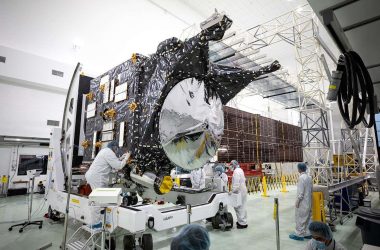Introduction
India’s Chandrayaan-3 mission has successfully landed near the moon’s south pole, making India the fourth country to achieve this feat. The mission is significant as it explores the potentially water-rich polar region and lays the groundwork for future lunar exploration.
The Chandrayaan-3 Mission
The Indian Space Research Organisation (ISRO) launched the Chandrayaan-3 mission on 14 July. The spacecraft, named after the Sanskrit word for “mooncraft,” traveled for six weeks and covered a distance of about 380,000 kilometers before reaching the moon.
After slowing itself in orbit, Chandrayaan-3 descended vertically to make a successful landing near a spot with water reserves. This landing could potentially enable the establishment of a permanent lunar base. Indian Prime Minister Narendra Modi remotely addressed mission control, expressing pride in India’s achievement and emphasizing that the success belongs to all of humanity.
India’s Future Space Exploration Goals
Shri M. Sankaran, director of ISRO’s U R Rao Satellite Centre, stated that with the success of Chandrayaan-3, India is now setting its sights on sending a human into space and launching a mission to Mars.
Previous lunar missions
India’s previous lunar missions include Chandrayaan-1 and Chandrayaan-2. Chandrayaan-1 consisted of a lunar orbiter and a probe that intentionally hit the moon’s surface at high speed. Chandrayaan-2, which aimed to land softly and conduct scientific research, experienced a software glitch that caused its Vikram lander to crash into the moon’s surface in 2019.
Global Lunar Exploration
Before Chandrayaan-3, only the United States, the USSR, and China had successfully landed intact missions on the moon. A Japanese start-up’s attempt ended in failure, as did Russia’s recent lunar exploration mission, during which the Luna 25 lander crashed into the moon’s surface due to an extended engine firing.
Conclusion
The successful landing of Chandrayaan-3 near the moon’s south pole marks a significant achievement for India and its space exploration efforts. It opens up possibilities for further research and potential human presence on the moon.








